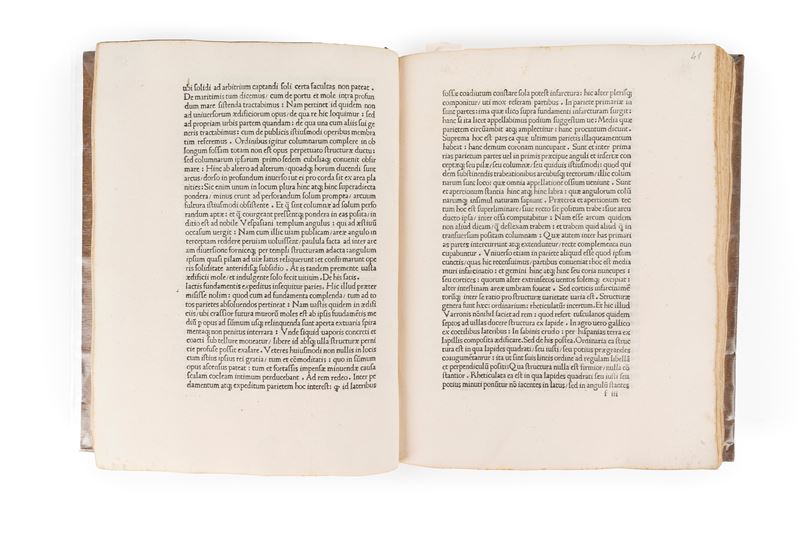Estimate
€ 3.000 - 5.000
Sold
€ 8.910
The price includes buyer's premium
Do you have a similar item you would like to sell?
Information
Specialist Notes
Editio princeps, edited by Angelo Poliziano and dedicated to Lorenzo de' Medici. A man of letters, defender of the Italian language, moralist, mathematician, but above all art theorist and architect, Alberti earned universal fame starting from the Renaissance. Less than a century after his death, he was still an authority and Vasari, in the first edition of his Lives, paid homage to the "Florentine Vitruvius". For Alberti, architecture was the art par excellence, the one that best contributed to the public interest, the highest form of Good. In the 1440s, at the request of Lionello d'Este, Alberti undertook a commentary on Vitruvius's De architectura. The De re aedificazioneria , divided into ten books like the Vitruvian treatise, was the first architectural treatise of the Renaissance. Alberti was soon cited by humanists and writers, such as Rabelais in Pantagruel, as the equal not only of Vitruvius, but also of Euclid and Archimedes. In the introduction to the book, Alberti discusses the role of architecture in social life. According to Fowler, Alberti began working on his treatise in the mid-15th century and improved and revised the work until his death, which occurred in 1472. About thirteen years later, his work was published thanks to the efforts of his brother. Alberti, who was the architect of several important Renaissance buildings, including the Basilica of San Sebastiano and Sant'Andrea in Mantua, Santa Maria Novella and Palazzo Rucellai in Florence, based his work on De Architectura of Vitruvius, dividing it into ten books that describe the construction of palaces and churches, the materials, the construction and ornamentation of sacred and profane buildings, as well as a section dedicated to the restoration of buildings.
"In accordance with classical principles , the main elements of architecture are defined as beauty and ornament. Beauty is essentially harmony, the correct proportions of the parts" Alberti considers architecture not only for ecclesiastical purposes or private patrons, but for the first time particularly as a civic activity. His book includes a scheme for building a whole new town, the earliest printed example of town planning" (PMM 28).
Contact
Suggested lots
Caricamento lotti suggeriti...











